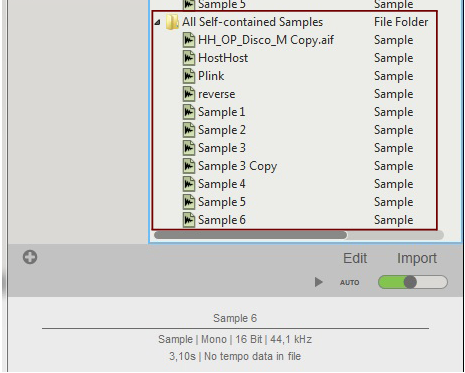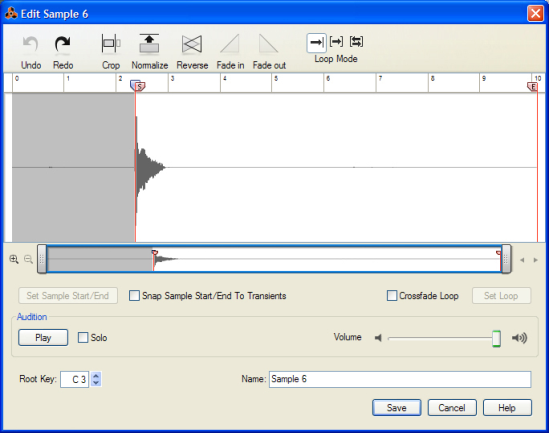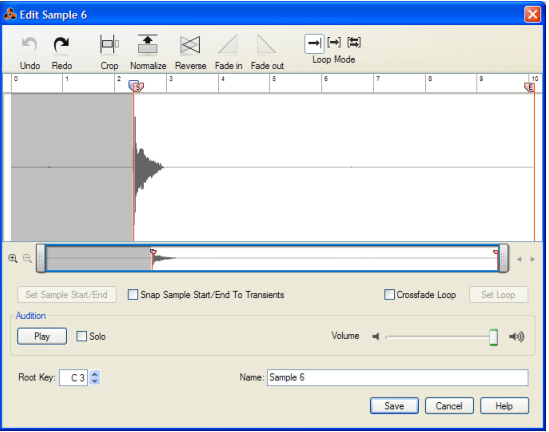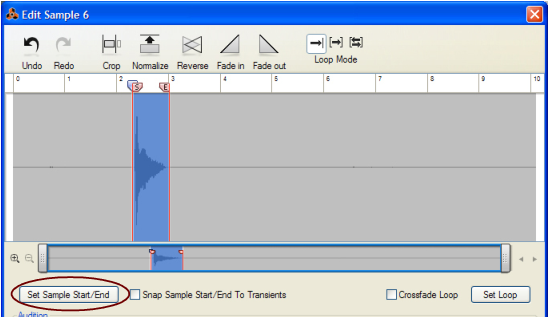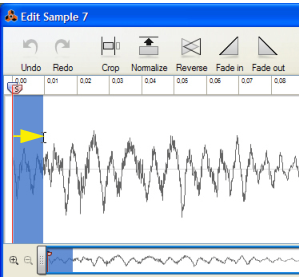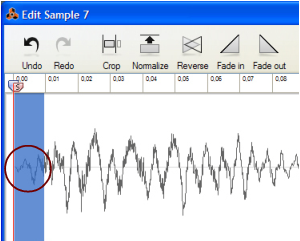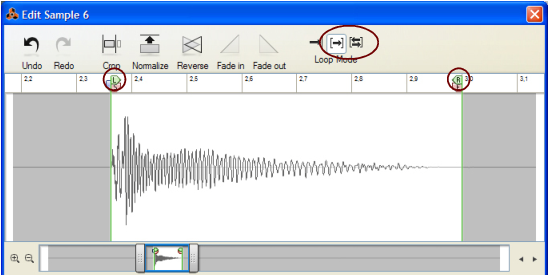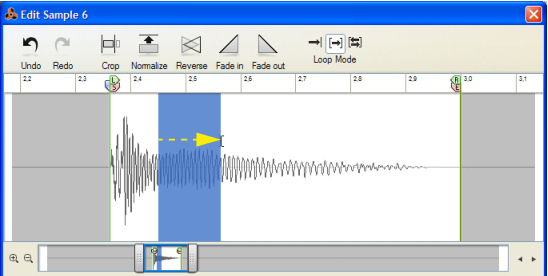Click the Crop button to crop the sample so that only the content between the Start (S) and End (E) locators is preserved. The rest of the sample will be permanently deleted. See “Cropping samples” for more info.
Click the Normalize button to amplify the entire sample so that the loudest peak touches 0 dB. Note that the entire sample is normalized, regardless of any locator settings. See “Normalizing samples” for more info.
Click the Reverse button to reverse (play backward) the entire sample. Note that the entire sample is reversed, regardless of any locator settings. See “Reversing samples” for more info.
The Fade In and Fade Out buttons can be used to apply a fade in or fade out of the sample volume. See “Fading in/out samples” for more info.
Click one of the Loop Mode buttons to select loop type. The default (leftmost) setting is “no loop”. Then follow “Loop Forward” and “Loop Forward + Backward”. See “Looping samples” for more info.
Below the waveform pane is the horizontal Waveform Navigator. This can be operated in the same way as the Song Navigator in the sequencer (see “Scrolling with the Navigators and scrollbars”, “Zooming horizontally in the Sequencer” and “Scrolling and zooming using a wheel mouse”).
Set the desired sample playback region by clicking and dragging on the waveform pane. Then, click the Set Sample Start/End button to automatically place the Start and End locators at the beginning and end of the sample region. See “The Set Start/End function” for more info.
Tick the Crossfade Loop box to introduce a crossfade in the loop. Crossfade is useful to even out any clicks in the loop points, especially for sounds with fairly even volume throughout the loop region. See “The Crossfade Loop function” for more info.
Set the desired loop region by clicking and dragging on the waveform pane. Then, click the Set Loop button to automatically place the Left and Right Loop locators at the beginning and end of the loop region. See “The Set Loop function” for more info.
|
•
|
|
•
|
Type in desired name for your sample. Note that this will overwrite the original name of the sample in the Song Samples list in the Tool Window once you click Save. See “Renaming samples” for more info.
Click Save to save your sample. The sample will appear in the Song Samples location in the Browser. See “Saving edited samples” for more info.
|
3.
|
|
1.
|
|
1.
|
